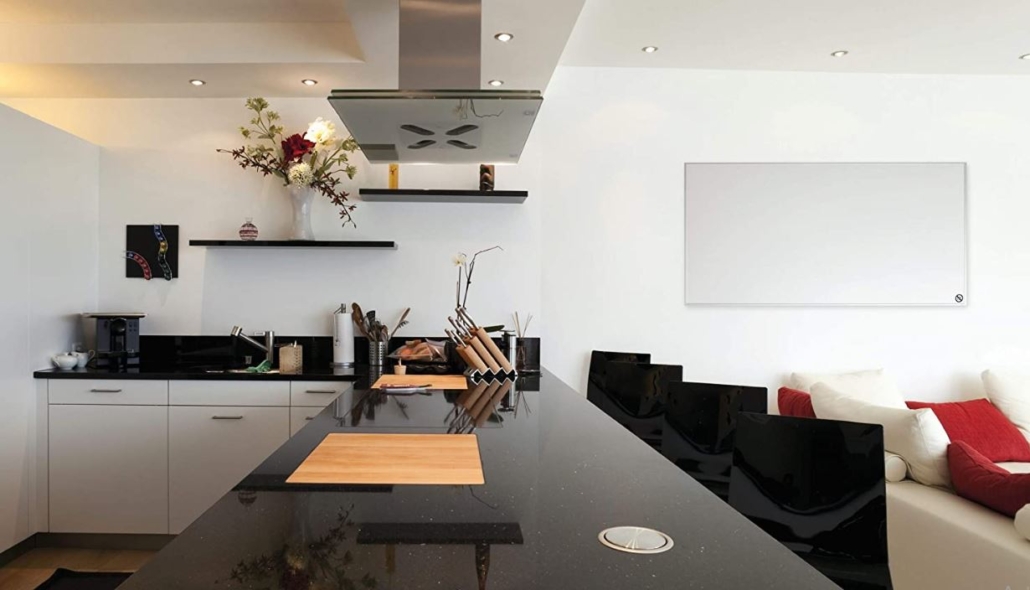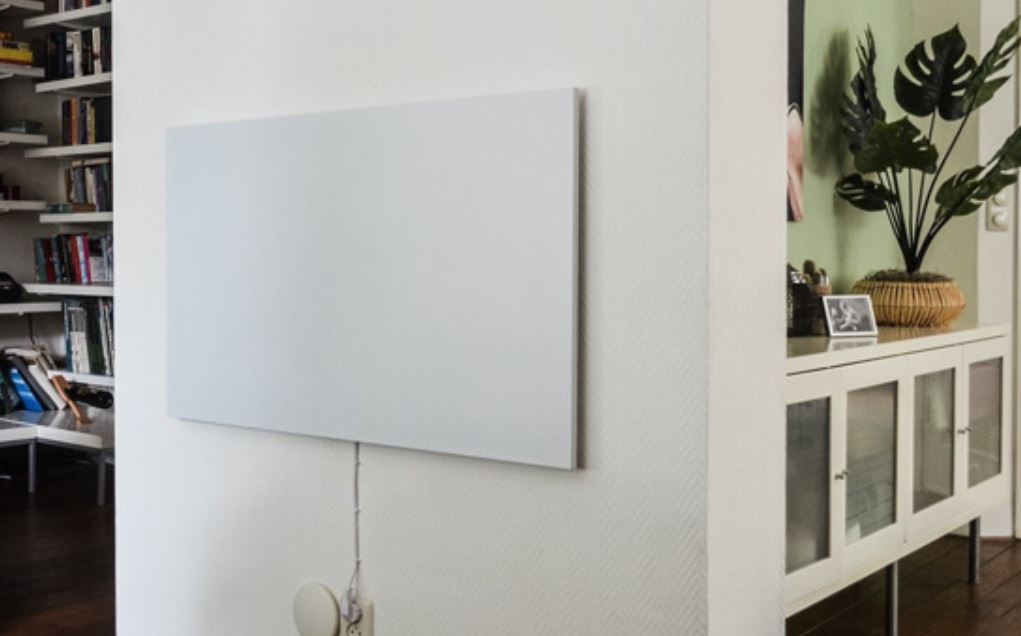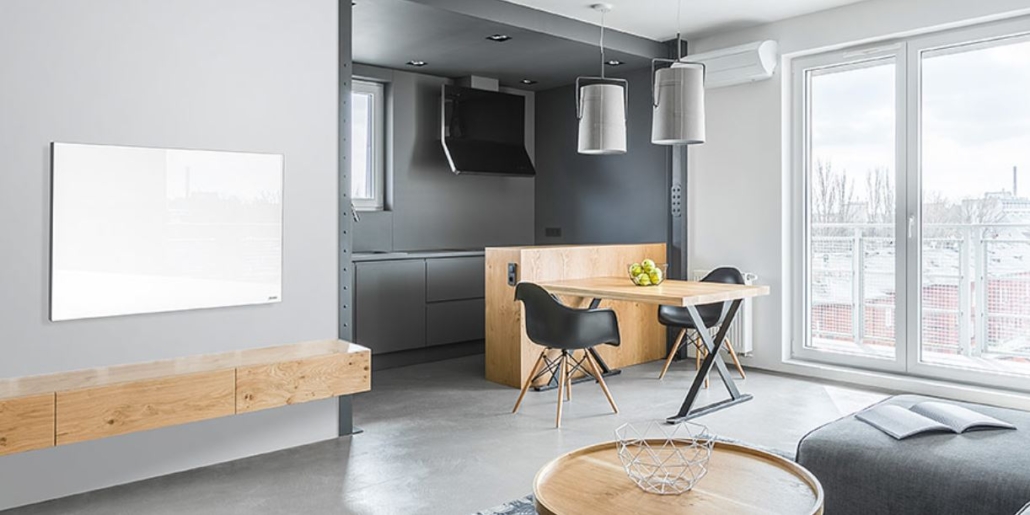Infrared Heating Panels Disadvantages, Problems, And Possible Dangers – Are They Any Good?

Do you wish to replace the present method of house heating? Have you considered alternatives that would be easier for you and the planet?
The use of infrared heating has the potential to hit the mark. However, getting the low down before purchasing is essential.
Even though infrared heating seems new and innovative, it is already being used in many homes.
You’ll run into them in places like saunas and doctors’ offices, which take advantage of the health benefits of infrared radiation; even some restaurants use them to keep their customers warm.
See our helpful guide below to learn more about the benefits and drawbacks of infrared heating panels, the different types, and more.
What Are The Different Types Of Heaters
There are multiple different types of heaters available. Thus, finding the one best suited for you is improbable before making your purchase. Take a look at the different types below:
- Personal Infrared Space Heaters: Floor, tabletop, and wall heaters give additional warmth in small places like living rooms, bedrooms, and offices.
- Infrared fireplaces and stoves: Some infrared heaters are best for well-insulated or interior spaces, heating up to 1,000 square feet. Infrared fireplaces and stoves are popular for those wanting to warm up a larger area.
- Garage & Industrial infrared heaters: Large heat output and size make these heaters suitable for larger rooms. Open bays, loading docks, warehouses, hangars, and more benefit from wall-mounted infrared heaters.
- Outdoor/patio infrared heaters: These heaters are safe, practical heating options. Outdoor heaters provide a lot of heat for a small space, giving much-needed comfort in chilly weather.
- Bathroom Infrared Heaters: Some folks use infrared bathroom heaters. Invisible infrared heating warms the bathroom in winter.
Are Infrared Heating Panels Worth Buying?

Yes! Infrared heaters are worth purchasing. Since they do not circulate air and release toxic elements, infrared heaters help boost the air quality inside a building.
They can last up to a decade without breaking down and won’t start a fire if they do! You can save up to 40% on heating expenditures by switching to an infrared heater from another type of heater.
Advantages
Focused Heat
They raise the temperature of the room’s walls and furniture to warm the space uniformly.
Use Up Minimal Room
These small panels are available in a wide variety of shapes and sizes, including the more common rectangular and square forms and more unusual wide and narrow horizontal variants.
These panels have a wide range of possible installation contexts. Mount infrared panels (walls, ceilings, even the floor), while radiators can only be positioned low on an interior wall.
This allows for huge convenience as infrared heaters won’t get blocked by furniture!
Less Mold
Mold growth is slowed or stopped altogether because heat eliminates condensation in damp areas such as the bathroom.
Could Be Better for Your Health
If you or a family member suffers from dust allergies or asthma, infrared heating may be better than gas heating.
Unlike traditional radiators, the air isn’t displaced, and dust isn’t stirred up since infrared radiation only heats objects.
Disadvantages
Uses electricity which is becoming expensive
Infrared panels are effective enough to reduce costs, but they require electricity, which is more expensive than most fuels.
You cannot place objects in front of infrared heaters.
The air is not heated by infrared panels, only the things themselves. Even though this makes modern boilers significantly more efficient than their predecessors, it makes them less reliable if something is blocking their path.
Placing an item of furniture in front of a panel will cause the panel’s heat to be absorbed by the table.
Therefore, infrared panels may be difficult to install in smaller homes. If this describes your situation, a ceiling panel may be the answer, but it will cost more.
Cannot replace a boiler in its entirety
A gas boiler is now irreplaceable since infrared panels can heat your home but not your water.
However, infrared panels can be used in conjunction with a conventional electric immersion heater or water cylinder to get the same effect.
But you should keep an eye out because that is not always the case. Although infrared panels are just now becoming popular in the heating market, several businesses are investigating how to incorporate water-heating technology into the panels.
Placement Of Electricity Cables
One of the few drawbacks to infrared heating is the need to run electrical lines. Installing pipes in every room is unnecessary.
However, getting the cords to the outlet appropriately and effectively is crucial. Cables are run through the ceiling and walls to do this.
The overall setup costs more than your typical gas boiler.
Although infrared panels may be had for a relatively low cost, installing an entire system can set you back several hundred dollars.
The total cost of an infrared system is around double that of a conventional boiler.
Despite this, you should recoup your investment in a little over a year from the money you save on utilities.
Common Problems

Strange Smell Coming from the Heater
Many different things can cause a strange smell to come from the heater. However, more often than not, it would not require a whole fire brigade.
Sometimes the elements burn off certain oils on the heaters used to protect it during transit. However, if it does get progressively worse, it’s probably best to contact a professional.
The Heater is Overheating
Sometimes if the thermostat is being used or the panel has been mounted too close to the wall, it may cause overheating your heater.
This is quickly resolved by leaving an appropriate distance behind the wall and the panel and using a different thermostat.
The Heater is not Warming the Room Up.
If your heater was not carefully placed and is not the right size for the particular room, it will not warm up the entire room.
Use the wattage calculator to figure out how many heaters you need for a given space.
The Heater is Making a Strange Noise
This is typically not a huge issue and is sometimes resolved within a few moments. More often than not, your heater would make a noise because it expands as a result of the heat and then contracts when it cools.
Comparisons
Infrared Heating Panels vs. Gas – Which Is Better?
Although central gas heating is still widely used, more consumers are considering switching to low-carbon alternatives like infrared heating.
Infrared heaters are efficient because they only warm the things and people that need them.
Because infrared rays do not warm the air, far less power is required to achieve the same level of comfort. So, infrared heaters save almost 60% in energy compared to gas heaters.
Although it may seem a no-brainer to go with infrared, electric and gas heaters use vastly different fuels and have drastically different price tags.
If you’re looking for the most cost-effective way to heat your home, you should weigh the running costs of both options.
Infrared Heating Panels vs. Convection – Which Is Better?
Unlike convection heat, infrared heat can be precisely directed to the object of its application. The ideal room temperature can be reached more rapidly as a result.
These heaters don’t take up much room on the floor or a tabletop due to their small profile and ability to be wall-mounted.
What sets infrared apart from other heating options is that the heat from infrared heaters is radiated, while the heat from a convection oven is carried by hot air.
To function correctly, an infrared heater needs a clear line of sight to the object it is warming.
Infrared Heating Panels vs. Heat pump – Which Is Better?
There are many benefits of infrared heaters over conventional heat pumps. They are easier to get by, cheaper to set up, and need almost any care once they’re in place.
However, heat pumps have a yearly maintenance expense of hundreds of pounds.
Heat pumps also have far higher lifetime expenses than infrared heating systems, by as much as 40% to 50%.
Infrared Heating Panels vs. Storage Heaters – Which Is Better?
In terms of energy efficiency, storage heaters are among the worst options. And yet, they are commonly located in smaller homes and commercial establishments that lack access to natural gas.
Infrared panel heaters convert nearly 100% of the electricity to heat, making them more efficient than electric storage heaters or electric radiators, which in turn require less time to achieve the same level of heating.
Who Should Buy Infrared Heater Panels

Many people can use infrared heaters for many different uses. If you own a hot yoga studio or are just looking for something to warm up the bathroom on those colder evenings, you could be in the market for an infrared heater panel.
What Wattage Do You Need?
A heater’s wattage indicates its maximum power. In comparison to other forms of heating, such as radiators or storage heaters, the overall wattage for infrared heating panels is minimal.
This demonstrates that infrared panels are far more efficient at conserving energy than conventional ones.
Selecting a panel with a total wattage equal to or greater than the space heating needs is the first step in achieving efficient heating.
If you have to choose between panels with different wattages, but the sum is still below what you need, go with the higher one.
Heating panels’ efficiency will drop, and their lifespan will be shortened if they work harder than necessary to meet the space’s heating needs due to under-sizing.
The area will heat up quickly with the help of more powerful panels, and they may be set to shut off once the desired temperature is reached automatically.
The placement of your infrared panels is just as crucial as the wattage you select to ensure that all areas of the room feel warmth.
Areas of the room not within the infrared panels’ heating range will not be heated. More often than not, multiple smaller heaters will give more even heating than a single huge panel.
Best 3 Infrared Heating Panels – Mini-Reviews
Wexstar WS-8BKUS Black 800-Watt Infrared Electric Panel Heater
- Thinner than an inch, they don’t need much room and may be moved around without difficulty.
- Because there is no fan, no noise, and no dust is kicked up, it is safe for persons with asthma and allergies.
- The optional Wexstar Stand Support allows for installation in various locations, including on the wall, ceiling, or floor.
- Simple plug-and-play operation with any regular household 120 V power outlet; no special wiring or expertise required.
- With a Wexstar heater, you won’t have to worry about any repair or replacement charges. Heating objects, rather than the air around them, allows Wexstar infrared technology to operate at a far lower power output while achieving the desired results.
Wexstar WS-8WUS Infrared Panel Heater 800W White
- Traditional heaters warm the air around them, but the heat rises to the ceiling and is unevenly distributed. By heating the things rather than the air around them, Westar infrared technology provides more consistent and effective heating at a much lower cost per watt.
- There is minimal noise and dust, making it safe for persons with asthma and allergies.
- Allows for either wall installation or freestanding use with the addition of the Westar Stand Support.
- Simple plug-and-play operation with any regular household 120 V power outlet; no special wiring or expertise required.
- There are zero ongoing fees or parts to replace with a Westar heater. Thinner than an inch, they don’t need much room and may be moved around without difficulty.
WarmlyYours Ember Mirror Infrared Radiant Heat Panel
- This radiant heat panel generates infrared radiation that only warms the objects it comes into contact with, making it a clean and efficient heat source.
- There is a wide selection of looks to choose from. It’s available in a mirror, black, and white coating. The attractive glass finish and the fact that they can be hung anywhere make them a welcome addition to any interior design scheme.
- Ember infrared radiant panels can cut heating bills by as much as half. They can reduce heating costs by up to half compared to traditional methods. They put all of the heat they generate to good use, with no heat loss during transmission to the zones.
- WarmlyYours provides a variety of timers and controls for your radiant heating panel, whether you opt for a hardwired or plug-in option.
Infrared Heating Panels FAQs

Q: How hot does an infrared panel get?
Infrared panels work best at 90°C and should not pass 100°C.
Q: How long does it take an infrared heater to warm a room?
An infrared heating system of 1500 watts can heat a 330-square-foot space from 50 to 68 degrees in 5 minutes.
Q: Can I leave an infrared heater on all the time?
Yes, this is the ideal way to install an efficient heating system.
Q: How many infrared panels do I need?
This all depends on the size of the room. First, you must multiply a room’s width, length, and height to determine its volume. Multiply the room’s cubic meters by 25 to get the average wattage. If the space is poorly insulated or has several windows or patio doors, add about 10% to 20%. However, it is highly suggested to seek an expert’s opinion when installing infrared heating panels.
Q: Are infrared heating panels safe?
Yes, they are safe.
Q: Can infrared cause burns?
No, they will be warm to the touch but cannot cause severe burns.
Q: How efficient are infrared panels?
Infrared panel heating is 50% more efficient than traditional systems.
Q: Do infrared heaters dry the air?
Infrared heaters don’t require room oxygen and reduce the demand for humidifiers in the winter due to not drying out the air.
Q: How much electricity do infrared heating panels use?
These heaters work quickly, so no preheating is needed. Some utilize only 300 watts of electricity, and virtually 100% of the heat is transmitted out, so they’re incredibly efficient and cheap.
Q: What type of heater is the safest?
One of the most cost-effective and risk-free heating options is an infrared model. Because they warm the air around the object rather than the thing itself, infrared heaters can be left unattended without risk.
Conclusion

Infrared heaters come with many advantages and a few disadvantages.
Their affordability and ease of use are good options if you want to replace your current heating system.
Be sure to do the correct calculations or liaise with a professional before installing them. If these heaters aren’t installed correctly, they could result in maintenance issues which will cost time and money!


